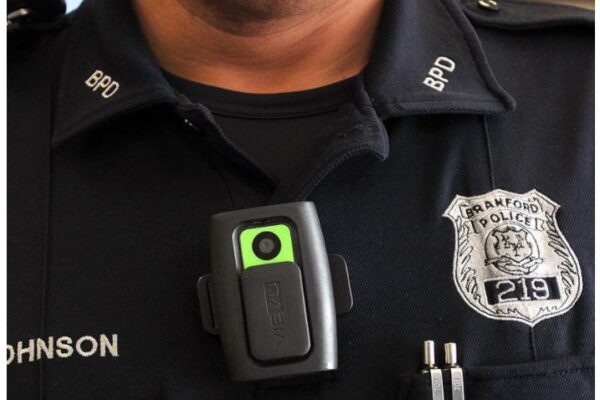This is what we told all of the legislators who asked us about AB 351 / SB 279 regulating the use of law enforcement body cameras:
What the law does on video retention and video availability is generally good. It is a step in the right direction.
However, the ACLU has some concerns, because the bill is not very comprehensive for a police body camera bill. Many critical issues are kicked down the road to police departments, and that is not the best way to ensure good, consistent, and well-considered policies. The ACLU model bill and New Hampshire police body camera law offer examples of a thorough policy.
Our biggest concern is subsection 3(c). Requiring written permission from every person in a video who is identifiable (as well as the property owner) to access to the video will permit police to block access to most videos, because people will simply not respond to the police permission letters. Requiring people to state an objection is still not good, but is better than a law that relies on people responding to government mailings that do not personally affect them – that is simply not going to happen. The provision, in practice, will allow police to deny access to virtually all videos (not to mention it opens to door to people being paid money in return for not agreeing to provide permission, etc.).
One of the main reasons for making police videos in the first place is to provide an additional layer of public accountability. It is critical to not prevent the public from being able to access these by creating additional layers of government bureaucracy.
We should be more inclined to pursue a privacy solution for videos (where it is in the public interest to release them) to add some language like: Whenever doing so is necessary to protect personal privacy, the right to a fair trial, the identity of a confidential source or crime victim, or the life or physical safety of any person appearing in video footage, redaction technology may be used to obscure the face and other personally identifying characteristics of that person, including the tone of the person’s voice, provided the redaction does not interfere with a viewer’s ability to fully, completely, and accurately comprehend the events captured on the video footage.
This is what we told all of the legislators who asked us about AB 351 / SB 279 regulating the use of law enforcement body cameras:
What the law does on video retention and video availability is generally good. It is a step in the right direction.
However, the ACLU has some concerns, because the bill is not very comprehensive for a police body camera bill. Many critical issues are kicked down the road to police departments, and that is not the best way to ensure good, consistent, and well-considered policies. The ACLU model bill and New Hampshire police body camera law offer examples of a thorough policy.
Our biggest concern is subsection 3(c). Requiring written permission from every person in a video who is identifiable (as well as the property owner) to access to the video will permit police to block access to most videos, because people will simply not respond to the police permission letters. Requiring people to state an objection is still not good, but is better than a law that relies on people responding to government mailings that do not personally affect them – that is simply not going to happen. The provision, in practice, will allow police to deny access to virtually all videos (not to mention it opens to door to people being paid money in return for not agreeing to provide permission, etc.).
One of the main reasons for making police videos in the first place is to provide an additional layer of public accountability. It is critical to not prevent the public from being able to access these by creating additional layers of government bureaucracy.
We should be more inclined to pursue a privacy solution for videos (where it is in the public interest to release them) to add some language like: Whenever doing so is necessary to protect personal privacy, the right to a fair trial, the identity of a confidential source or crime victim, or the life or physical safety of any person appearing in video footage, redaction technology may be used to obscure the face and other personally identifying characteristics of that person, including the tone of the person’s voice, provided the redaction does not interfere with a viewer’s ability to fully, completely, and accurately comprehend the events captured on the video footage.

